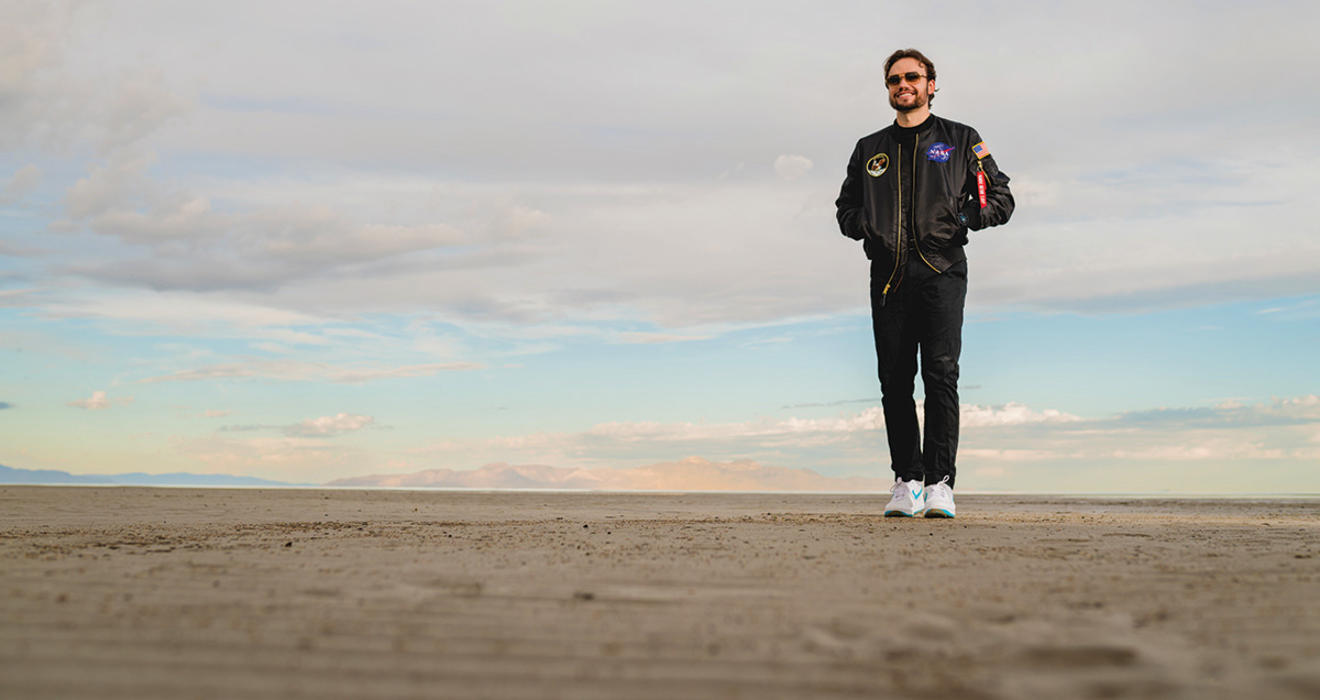
The town of Dugway, Utah, is on the eastern edge of the Great Basin Desert, 85 miles southwest of Salt Lake City. It is home to 618 residents and a vast and desolate military testing ground that is larger than the state of Rhode Island. It was where James Tralie ’19, senior planetary science producer/animator for the NASA Goddard Space Flight Center, awakened in the predawn hours of the last Sunday in September, primed for an epic aeronautical achievement and one of the greatest workdays of his young life. He had tried to get a full night’s sleep. He went for a run the night before in hopes of burning off surplus energy. It didn’t work.
“It was like waiting for Christmas morning,” Tralie says.
The occasion was the denouement of a NASA mission called OSIRIS-REx, short for Origins, Spectral Interpretation, Resource Identification, and Security-Regolith Explorer. As part of the historic, $1 billion endeavor, an unmanned spacecraft ventured to the far reaches of the solar system to the asteroid Bennu where it collected a half-pound sample of carbon-rich matter that NASA scientists believe might offer important clues to the origins of the universe. It was the first time NASA had ever attempted to bring a piece of an asteroid back to Earth, and if you think it sounds complicated, you are right.
Launched in September 2016, the mission spanned seven years and 3.86 billion miles. The return trip alone from Bennu took three years and covered 1.2 billion miles and would’ve taken much longer if the spacecraft had not been traveling more than 27,000 mph. Tralie, 26, was just starting his sophomore year at Princeton when OSIRIS-REx began, one of the handful of geoscience majors in the entire University, an abundantly gifted young man who had no clue his career trajectory would land him in the Utah desert on the morning of Sept. 24, when OSIRIS-REx, and its coveted asteroid sample, descended on Dugway — and Tralie told the world all about it as the principal commentator of the mission on NASA TV.
Over the full run of the three-hour, 20-minute broadcast, Tralie was stationed in the corner of an airplane hangar, about 10 miles from the landing spot, with a bank of monitors in front of him, his makeshift studio cordoned off with black curtains. He had a few handwritten notes and a laptop, but no teleprompter, which proved to be no problem. One part scientist and one part anchorman — think a cross between Carl Sagan and David Muir — Tralie skillfully and energetically explained to viewers what they were seeing and why it was important, making even the most arcane scientific concepts understandable. He explained how the spacecraft would enter the Earth’s atmosphere over San Francisco, at a temperature of more than 5,000 degrees, and decelerate to 11 mph in just 13 minutes as it descended toward Dugway. Tralie’s favorite TV show as a kid was Bill Nye the Science Guy. You could tell.
“It’s so much fun, communicating this stuff,” Tralie says. “You start to feel a deep connection with the far reaches of the cosmos.”
Tralie grew up just north of Philadelphia in Fort Washington, Pennsylvania (so named because Gen. George Washington and 12,000 of his Revolutionary War soldiers set up an encampment there before moving on to Valley Forge in the winter of 1777), and academic stardom seemed all but hard-wired into him, given his genes. His mother, Mary Poteau-Tralie *91, earned her Ph.D. from Princeton in French language and literature and went on to a 32-year career as a French professor at Rider University. His father, John, was an aeronautical engineer for 25 years, helping to build Earth-observation satellites and other spacecraft (he worked for Lockheed Martin, the company that built OSIRIS-REx) before beginning a second career as a mathematics teacher at Upper Dublin High School, where his students included his son James. It wasn’t supposed to happen, but the regular A.P. calculus teacher went on maternity leave, and John Tralie was the only person certified to replace her. “It was uncomfortable for both of us, but I couldn’t have messed him up too much. He got a 5 on his A.P. exam,” John Tralie says. James’ older brother, Christopher Tralie ’11, has a Ph.D. from Duke University and is an assistant professor of mathematics and computer science at Ursinus College.
Young James’ interests went well beyond the classroom. He was first violin in the school orchestra and was a play-by-play broadcaster for the livestreams of his high school football games. A shortstop and pitcher for the Upper Dublin baseball team, he was good enough to attend showcase events in front of college coaches. “I thought I was going to be a professional ballplayer,” Tralie says.
But gradually his greatest passions became filmmaking and storytelling, pursuits that took root not long after his parents gave him a Flip video camera for his 10th birthday. He joined a computer club and learned how to create animations. He made a short, PSA-type video on the dangers of drugs and alcohol and wound up winning first place in a local film festival. For four straight years he won first place in a film competition sponsored by WHYY, the PBS station in Philadelphia, earning acclaim for a film about his fascination with his camera called Seen Through A New Lens. Another documentary, The Tech Generation Gives Back, was accepted into the White House Student Film Festival, where he met President Barack Obama, Spike Lee, and British filmmaker Steve McQueen.
Tralie continued to make films at Princeton, including one on the scientific underpinnings of seismology that accompanied his senior thesis, though perhaps his most celebrated work to date is a two-minute, 19-second short he directed for NASA in 2020, a year after he joined the agency. The film — MAVEN Explores Mars to Understand Radio Interference At Earth— was selected as one of 28 films for the prestigious SIGGRAPH Computer Animation Festival, a showcase of the best storytelling and visual effects in short films (the winner was a project produced by Pixar) that is one step removed from the Academy Awards.
Currently Tralie is directing two docuseries — one for NASA on OSIRIS-REx, and one for Hulu on NASA’s James Webb Space Telescope, which gives astronomers detailed images of the cosmos never before seen. He doesn’t limit his creative work to the space orbit, however. Tralie has done animations and short films for a host of corporate clients, among them Nissan, Taco Bell, Apple, ZARA, Facebook, and many others.
“It’s a nice mental break from a lot of the science,” Tralie says with a laugh.
Frederik Simons, professor of geosciences and the department’s associate chair, taught Tralie in a freshman seminar and several other courses and was one of the advisers for Tralie’s senior thesis: Seismological Analysis of the Mohorovičić and Mantle Discontinuities Below Cape Verde Using Receiver Functions. Simons saw Tralie’s promise immediately. One of the invaluable advantages of being a student in a small major is that you have freedom to pursue your areas of interest and get an extraordinary amount of faculty attention. During Tralie’s time at Princeton, there were 20 professors in the geosciences department — two for each student. Tralie was only a freshman when he joined Simons and a group of students on a geological research trip to France and Spain.
“He was curious, confident, and creative,” Simons says. “[From the start] he wanted to know stuff and he was open to what we were offering, and he kept coming back for more. He has really managed to combine his early passion [filmmaking] with his added science. I can’t imagine someone being better at that than he is. What’s next? He’ll be coming to some IMAX near you.”
When Tralie first saw the NASA job posting for a producer and animator, he could scarcely believe his good fortune. “It was as if that exact job was written for me,” he says. Nancy Jones, senior communications manager at Goddard Space Flight Center and Tralie’s supervisor at NASA, felt the same way. An executive producer spoke to Jones about Tralie shortly after he started at NASA and she decided to invite him to a department meeting of the planetary-science group. “He had us at hello,” Jones says. “He came in with the biggest smile and such great, positive energy. It was so endearing. When he left, we were like, ‘[We’re sold] on him after one meeting, and we haven’t seen his content yet.’”
As much as he has enjoyed the animation and production work for NASA, Tralie found himself yearning to get time on the other side of the camera. A fluent French speaker who minored in the language at Princeton, he developed a love of performing during his years in L’Avant-Scène, Princeton’s French theater workshop, acting in medieval and classical productions under the direction of Florent Masse, professor of the practice in the French and Italian department and a hugely influential person in Tralie’s theatrical growth. Masse cast Tralie as the lead in such classic French plays as Lucrèce Borgia and Le Cid, and introduced him to the acclaimed French director Guillaume Gallienne, taking him and other students on a weeklong trip to Paris to meet with actors and watch multiple plays at La Comédie-Française, the oldest active theater company in the world, dating to 1680. The time on stage had a profound impact on Tralie. Soon after he was hired by NASA, he told Jones of his interest in being on-air in NASA’s growing multimedia department. He got his first hosting gig in October 2020, when OSIRIS-REx secured the sample from the asteroid Bennu.
“He had to go prove himself, and he did,” Jones says. “He did an excellent job.”
After that auspicious debut, Tralie continued to get more and more commentating opportunities, among them the annular solar eclipse broadcast, which he covered from Kerrville, Texas, on Oct. 14, taking viewers inside the so-called “ring of fire” that appears when the moon passes between the sun and Earth. Still, for Tralie, nothing could match the thrill and challenge of the OSIRIS-REx sample return broadcast in September, when he was effectively the play-by-play man for an unprecedented aeronautical undertaking. His excitement was palpable when the OSIRIS-REx spacecraft separated from the capsule that carried “precious cargo from the other side of the solar system,” the spacecraft heading for another asteroid (return date is 2029, so please check back), the capsule heading for the Dugway desert. When “the creamsicle-colored parachute” deployed and the capsule was minutes away from landing, Tralie tried to keep his emotions in check. It wasn’t easy. You never know how it’s going to go after a 1.2 billion-mile journey.
“This is like a marathon runner savoring the last lap here as we approach the finish, the landing in the Utah testing and training range,” Tralie said on the broadcast.
The Sample Return Capsule (SRC) kept descending, from 3,000 feet to 2,000 feet to 1,000 feet. In the corner of an airplane hangar in the Utah desert, Tralie steeled himself for the moment, the way he used to when he was pitching and the bases were loaded in a tie game. “They always say there’s nothing worse than being the mother of a pitcher,” Mary Poteau-Tralie says. “I would be a nervous wreck, but he always stayed calm.”
And so it was on Sept. 24. Tralie’s aspirations include doing a full-length feature film based on his maternal grandparents, who met when his grandfather was a French Navy man stationed in Philadelphia working to secure armaments in advance of D-Day, meeting his English-speaking grandmother in the process. At a dance they communicated entirely through a French-English dictionary. It was cumbersome, but it worked, and so did the marriage. It is a rich story, but for now, all Tralie could think about was OSIRIS-REx and how much he loves his job.
When touchdown happened for the SRC, Tralie said on NASA TV, “A journey of a billion miles to asteroid Bennu and back has come to an end, marking America’s first sample return mission of its kind, and opening a time capsule for an ancient solar system. Unofficial touchdown time 8:52 a.m. Mountain.” He paused. “The team can breathe an immense sigh of relief.”
Wayne Coffey is a freelance journalist and the author of more than 30 books. He lives in Sleepy Hollow, New York.
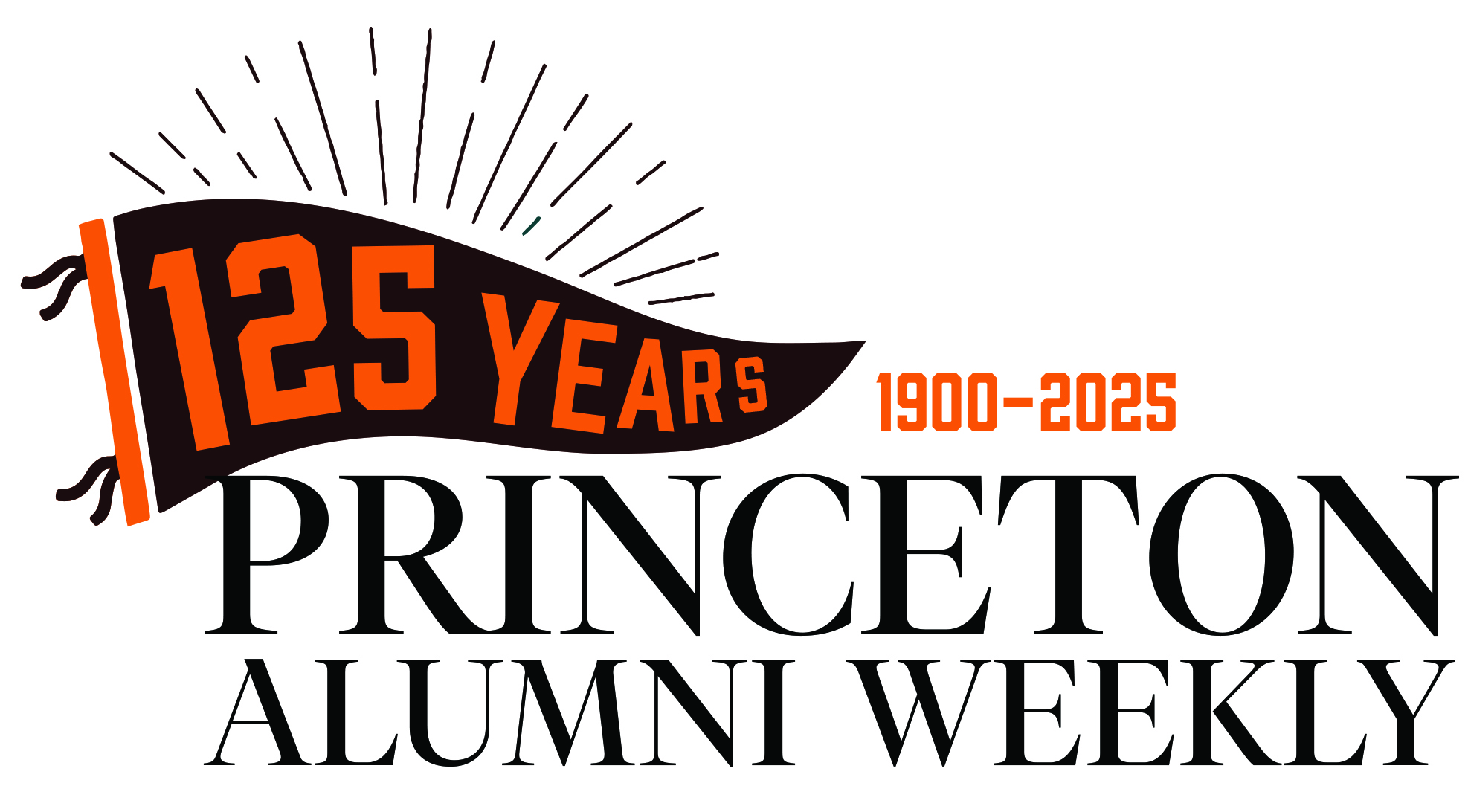

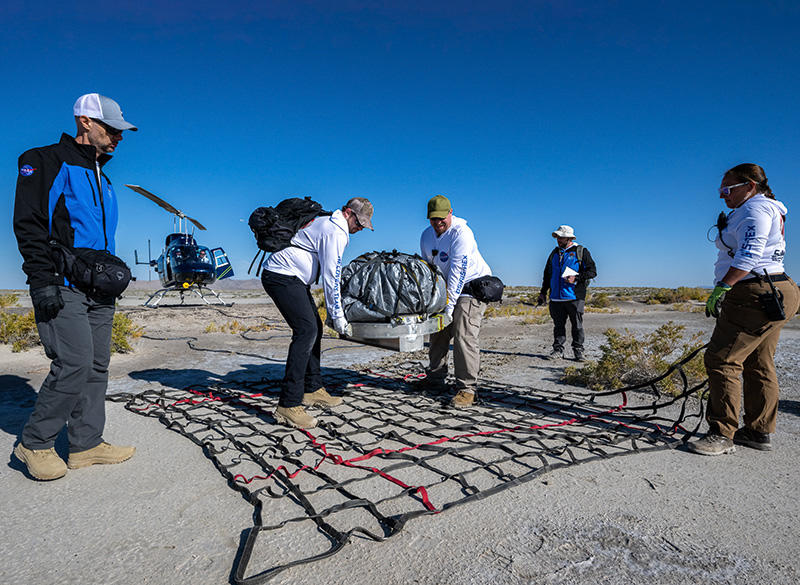
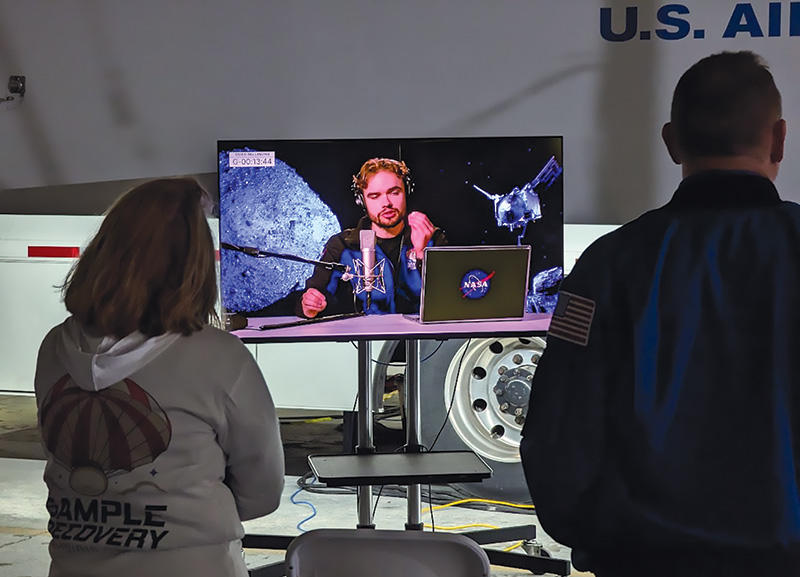
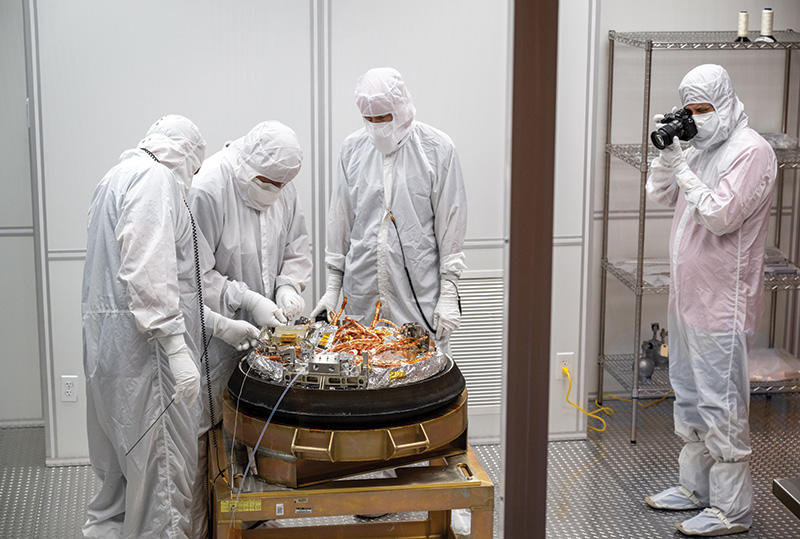

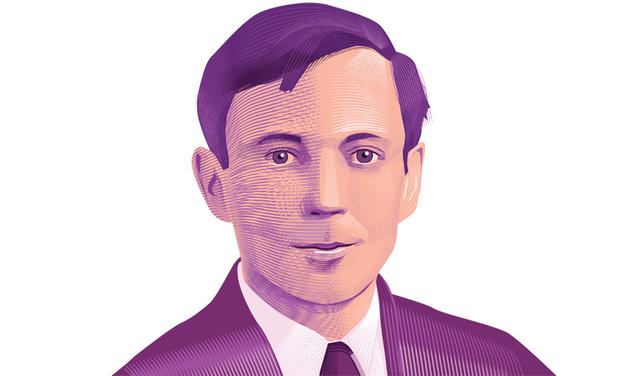


1 Response
Rick Mott ’73
1 Year AgoWonderful Story
Thoroughly enjoyed this profile, and kudos to Mr. Tralie for amazing work only four years after graduation. I was a Siggraph tourist from about 1982-92, a decade when CGI went from Tron to Terminator, ostensibly to learn data visualization but actually trying to crash the best Wednesday-night parties and drooling over the tech in the pure arena-rock ambiance of the Electronic Theater. My daughter just graduated from Smith in geology this past spring, and I’m sending her a copy!